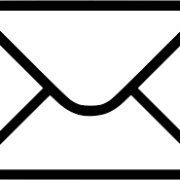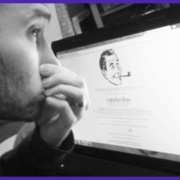How to write an email newsletter: Top 10 tips for writing a newsletter people open and read
I’m often asked how to write an email newsletter. What’s the secret? they ask. The main thing I’ve learnt from my time writing email newsletters is that not many people open email newsletters. Fewer still actually read them. This might be disheartening to a copywriter, but if you know this to start with, then you know you have to have a killer subject line, an intriguing headline and very short body copy that tells people quickly what you want them to know. Anything else is just padding you write to keep yourself in a job.
A whole industry has grown up around email marketing, and the organised clients and agency will do lots of testing, so you have to come up with many different versions of the same copy. Here are my top 10 tips for writing successful newsletters:
How to write an email newsletter:
- Get an amazing brief – As with all copy jobs, get a full written brief, not just a post-it note. Get the background, target audience, benefits, key insights, key proposition, reasons to believe, tone of voice, etc. It might sound demanding but you’re coming to the subject cold and remember, it’s your job to provide polished sales copy, not research and strategy. Make sure the client is clear what they want or your bad copy will get blamed.
- The subject line is king – Something like 99.9% of marketing emails doesn’t get opened. If you can get someone to open your email you’re more than halfway there. Make sure to make it short, interesting, different, important, clear and valuable. I spend 80% of the time writing lots of different subject lines for testing and only 20% on the actual newsletter itself.
- Know who you’re writing to – It’s in the brief but is worth mentioning again. You’ve got to know exactly who you’re writing to, what they like, what they need, what keywords will trigger them. Once you know the boxes all you have to do is tick them.
- Keep it new – Some people out there will read the newsletter and that’s if they find it useful and relevant to them, so write about different things in a different way each time. That can be tough when you keep being briefed on the same stories. That’s the challenge of copywriting. You have to bring in your own experiences and
- Call to action – Make sure the next step is big and bold. Include is separately from the body copy as people will miss it there. Again, if it’s not in the brief suggest it.
- Top 10 lists are a sure bet – If it’s easier to write then it’s often easier to read, and nothing’s easier to write than a top 10 list. It’s great for the reader because they can skip down the points in bold or read more, while it’s good for the copywriter because they can concentrate the client’s fuzzy thinking into succinct points quickly.
- Do questions work? – Yes. It’s an old trick but is a good way to start the first paragraph of body copy or in the subject line with a question, but not both, as Gmail previews the first line of copy and it looks strange if all you do is ask questions.
- Pictures and picture captions – After subject lines and headlines, the most important piece of copy you’ll write is the picture caption. Pictures are much more important and interesting than copy (hard for a copywriter to say but it’s true), and after they’ve seen the picture they’ll often read the caption to get a bit more information. If you don’t know what pictures will go with an article, suggest them. The designer probably wants direction anyway.
- Have a theme – Each month it’s good to have a different theme so that you can tie in seemingly irrelevant news items or articles in together. Magazines do it regularly for the same reason. If you’re not briefed to do this it’s good to suggest it. It makes your newsletter seem more essential, more thought out. You can base a theme on the seasons, holidays… but everyone does this so try and be different.
- Sneak preview and quick polls – You can suggest other items that aren’t in the brief to fill out the content of the newsletter and make yourself more valuable. Add a quick poll, facts or Did you know? And if you know the editorial schedule, tell the reader a bit about what to expect in the next newsletter in this one to whet their appetite and help keep the open rate up.
This advice was designed for the agency or freelance copywriter who has just been asked to write the copy and is not concerned with when is the best time to send it, how to build an email list or other marketing know-how. For further reading on how to do the whole shebang read:
– 10 “Street-Smart” Secrets of an Email Marketing Strategist Who Lives and Dies By His Results by Ben Settle
– Email Marketing By the Numbers: How to Use the World’s Greatest Marketing Tool to Take Any Organization to the Next Level by Chris Baggott
Written by Copywriter Collective
Please let us know what you think of this topic by leaving a short (or long!) comment below. And sign up now for our regular newsletter at the bottom of the page.










Next subject: how to persuade a client to give you a considered, intelligent, written brief when they wouldn’t even recognise one if it got up and bit them on the bum? Looking forward to that one!
Miriam wants to write that one! It should be a popular post
if you want a considered, intelligent, written brief my suggestion is that you take the initiative to write it yourself and then agree it with your client before you start work. i try to do this whenever possible when i’m working directly with my own clients and it saves a lot of time, effort, and, importantly, money.
interestingly, in relation to simon’s piece here on freelance v agency i generally find that freelancers can’t really afford the luxury of getting the brief wrong and the resulting ’rounds’ (it’s creative development, after all, not boxing) of work that entails, whereas a lot of agencies seem to be able to.
And hours for writing a brief are chargeable ;)